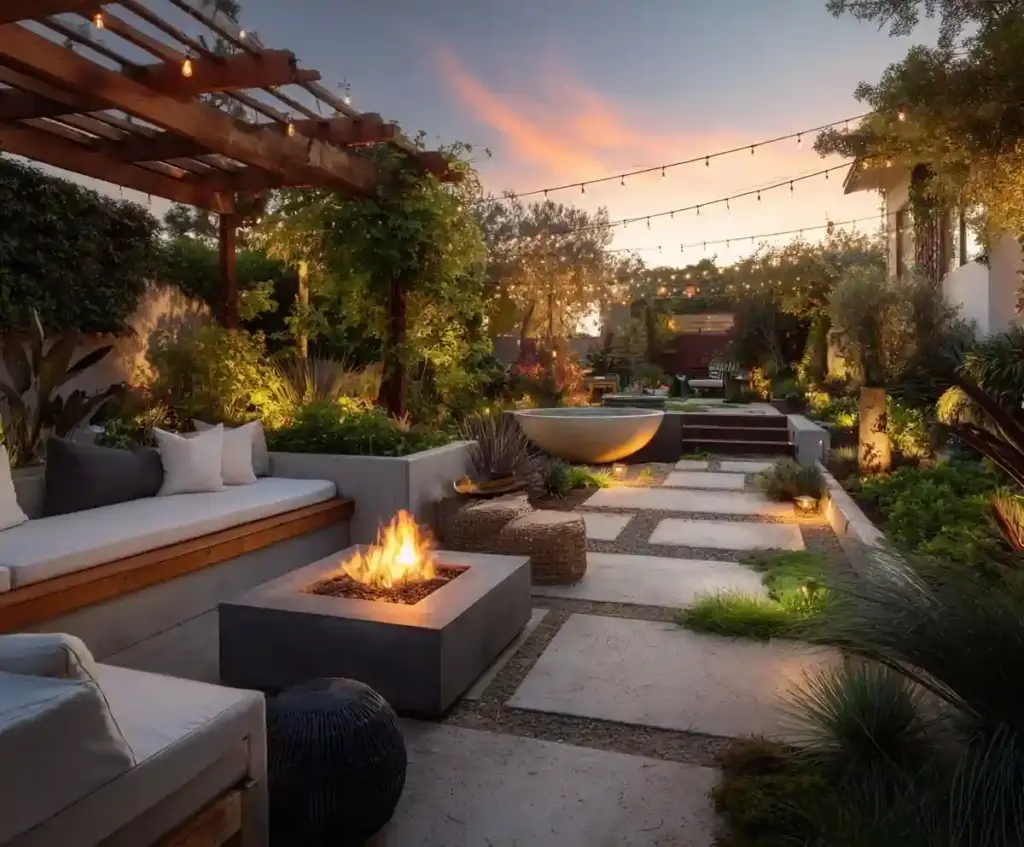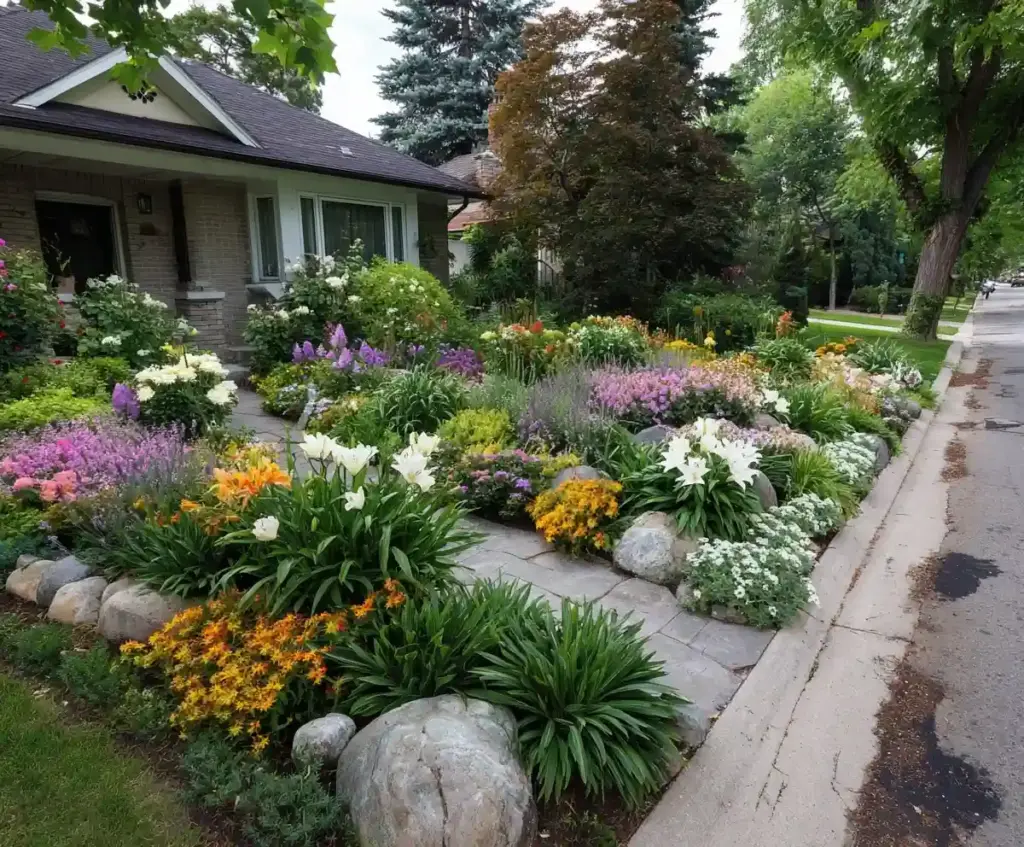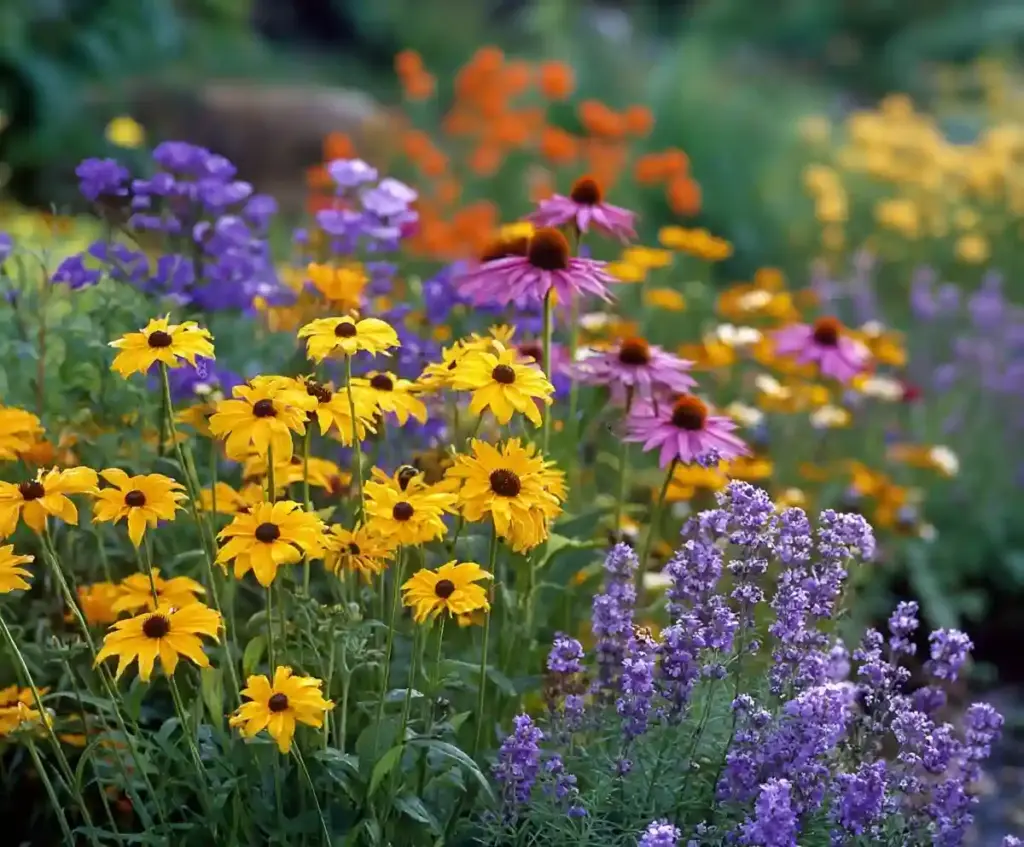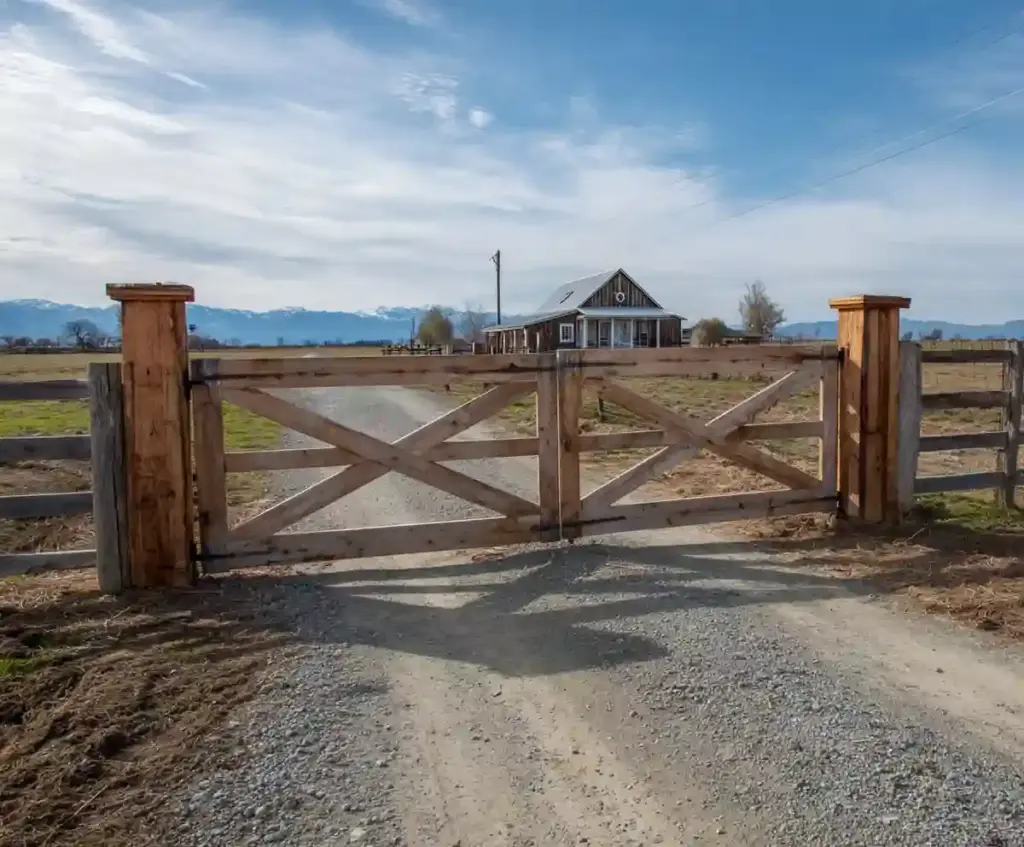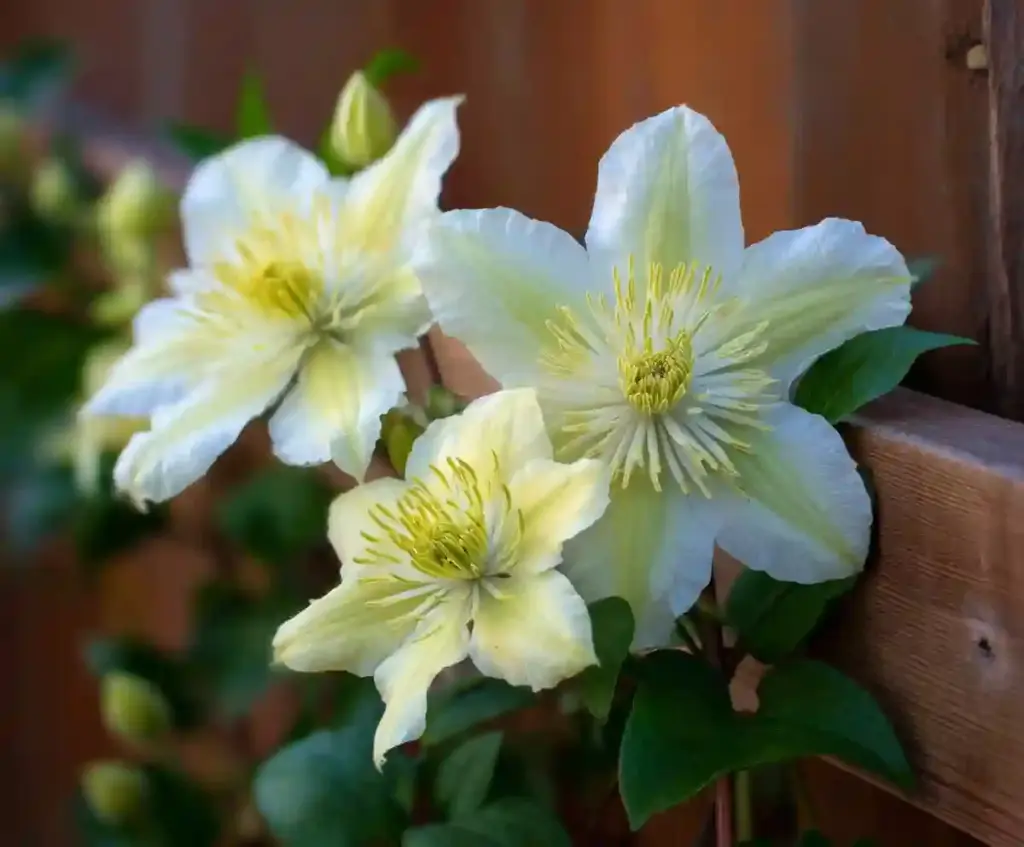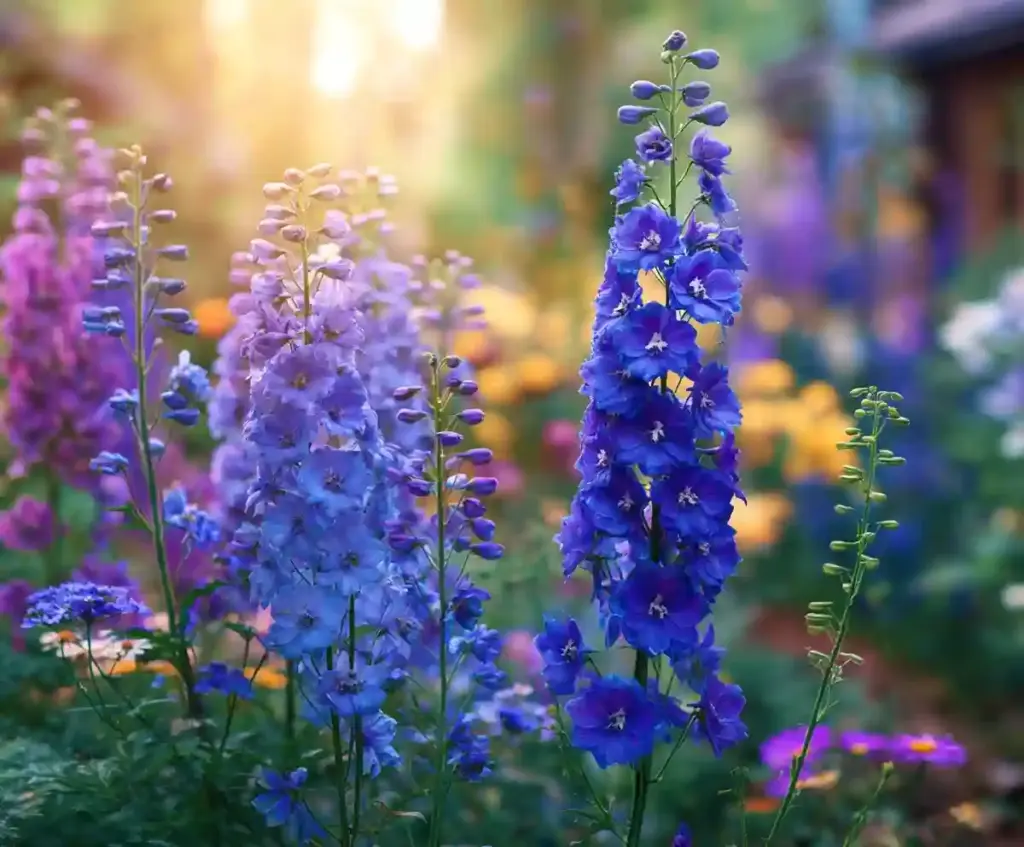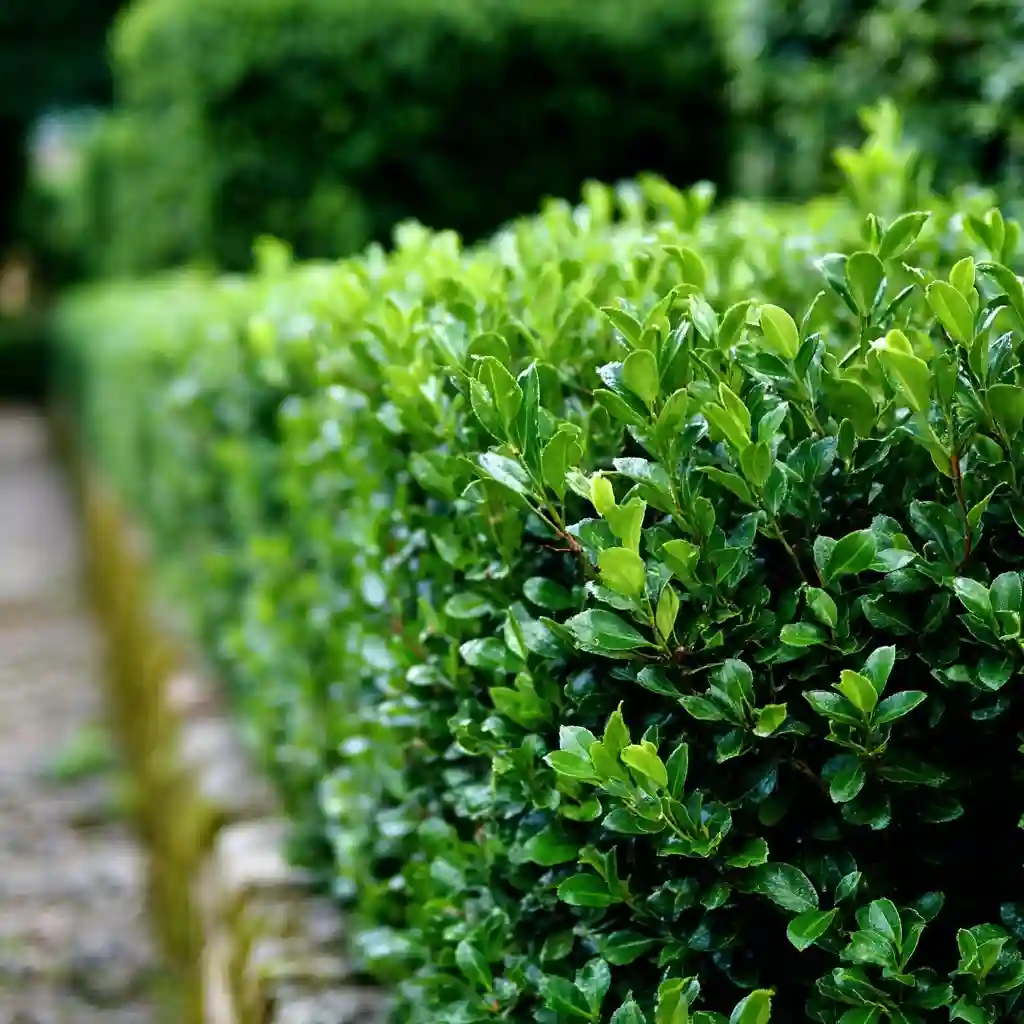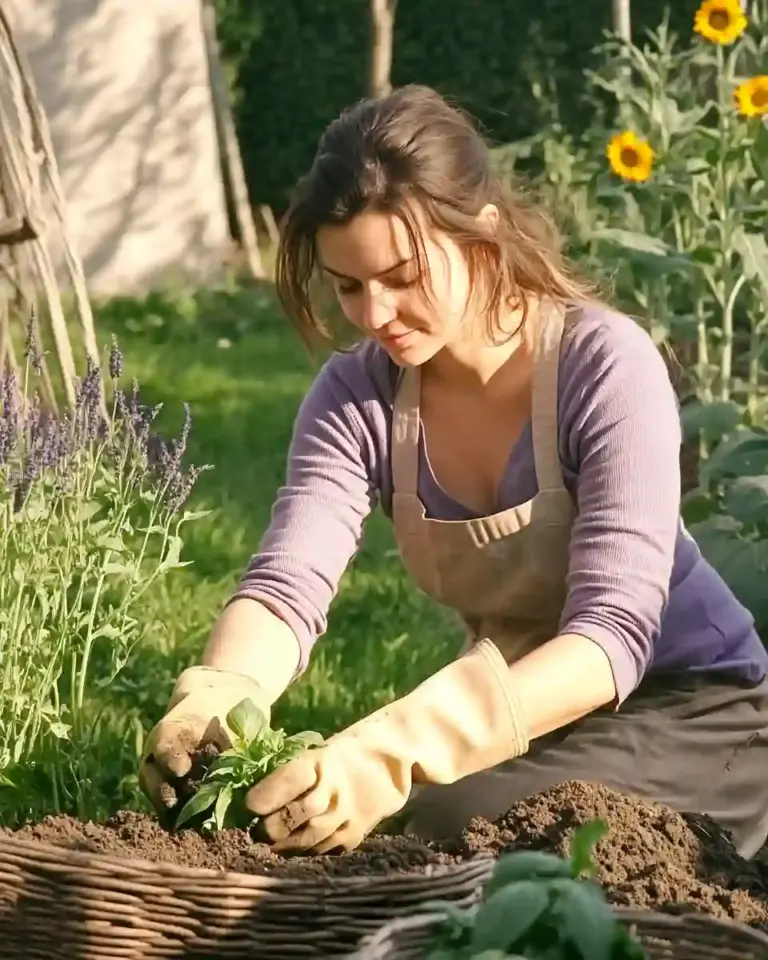Low-growing shrubs are one of the smartest choices for front yard landscaping. These compact, easy-care plants help define borders, soften edges, and add year-round texture without blocking windows or walkways. Whether you’re designing a formal garden or just want curb appeal that takes care of itself, low-growing shrubs offer a perfect blend of structure, beauty, and simplicity.
From evergreen varieties that anchor the garden in winter to flowering types that brighten spring and summer, the best low-growing shrubs for front yard landscaping can turn even the smallest space into a polished, welcoming retreat. In this guide, we’ll walk through 15 standout selections that are both functional and beautiful, so you can find the right fit for your climate, sunlight, and style.
Table of Contents
Boxwood (Buxus sempervirens)
Boxwood is a timeless favorite among low-growing shrubs, and for good reason. Its dense, evergreen foliage brings a refined look to any front yard, whether trimmed into tidy shapes or left to grow naturally. Thanks to its versatility and compact growth habit, boxwood works equally well in formal designs and relaxed, cottage-style gardens.
This shrub stays green year-round, offers excellent drought tolerance once established, and thrives in both sun and partial shade. Use it to line walkways, frame a front porch, or create low hedges that define garden beds without overwhelming the space. Its slow growth means less pruning, but when shaped regularly, it becomes a living architectural element in your landscape.
Why it works in front yards:
- Maintains shape and color all year
- Tolerates pruning for neat borders
- Thrives in containers and raised beds
Growth tip: Plant in well-drained soil and avoid soggy conditions. Consider spacing plants 18–24 inches apart for dense coverage.
Japanese Pieris (Pieris japonica)
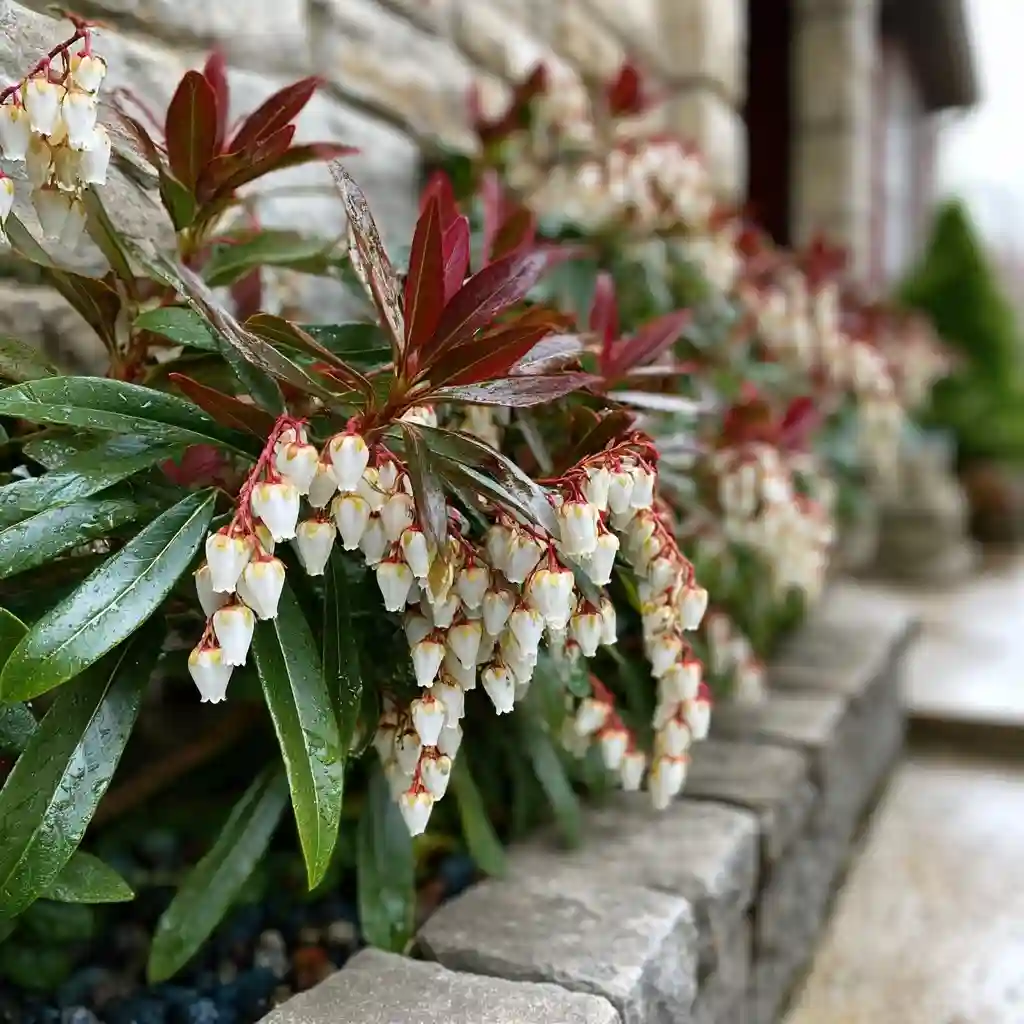
Among low-growing shrubs, Japanese Pieris stands out for its multi-season beauty and graceful form. This slow-growing evergreen produces cascades of delicate, bell-shaped flowers in early spring—typically in shades of white or soft pink. But it doesn’t stop there. The new foliage often emerges in striking red or bronze hues, adding another layer of visual interest throughout the growing season.
Perfect for partially shaded spots near your front entry, Japanese Pieris brings structure without feeling stiff. Its tidy, mounded shape makes it ideal for foundation plantings, shaded borders, or as a soft backdrop for other flowering plants.
Why it works in front yards:
- Evergreen foliage provides year-round interest
- Spring flowers attract pollinators
- Low-maintenance and deer-resistant
Growth tip: Prefers acidic, well-draining soil and benefits from mulch to retain moisture. Avoid planting in full sun in hot climates to prevent leaf scorch.
Dwarf Yew (Taxus baccata ‘Repandens’)

If you need a rugged, reliable evergreen, Dwarf Yew is one of the toughest low-growing shrubs you can plant. With its elegant, spreading habit and deep green needles, this shrub offers a soft yet structured look perfect for edging walkways, anchoring foundation beds, or filling tricky shaded spots.
What makes this yew especially useful in front yards is its tolerance for a wide range of conditions—including pollution, poor soil, and heavy pruning. Its horizontal branches create a graceful, flowing appearance that’s easy to maintain and rarely outgrows its space.
Why it works in front yards:
- Thrives in sun or shade
- Excellent for hedges or groundcover
- Tolerates urban environments
Growth tip: Ensure proper drainage, especially in clay-heavy soil. This shrub performs best when roots don’t sit in soggy conditions.
Dwarf Hinoki Cypress (Chamaecyparis obtusa ‘Nana Gracilis’)

For texture and charm in a compact form, Dwarf Hinoki Cypress is a standout among low-growing shrubs. This slow-growing conifer forms a natural, rounded mound with rich green, fan-shaped foliage that looks almost sculpted. Its layered, feathery branches add softness and visual depth, making it an excellent choice for front yard focal points.
This shrub thrives in full sun to partial shade and prefers well-drained soil. While it grows slowly, it holds its shape beautifully with little to no pruning—perfect for low-maintenance gardeners who still want visual impact. Its refined look makes it ideal for rock gardens, small borders, or as a solo specimen in containers.
Why it works in front yards:
- Soft, architectural texture
- Stays compact with minimal pruning
- Great for small spaces or containers
Growth tip: Avoid planting in overly wet soil. For best form, give it space to develop its natural shape without crowding.
Blue Star Juniper (Juniperus squamata ‘Blue Star’)
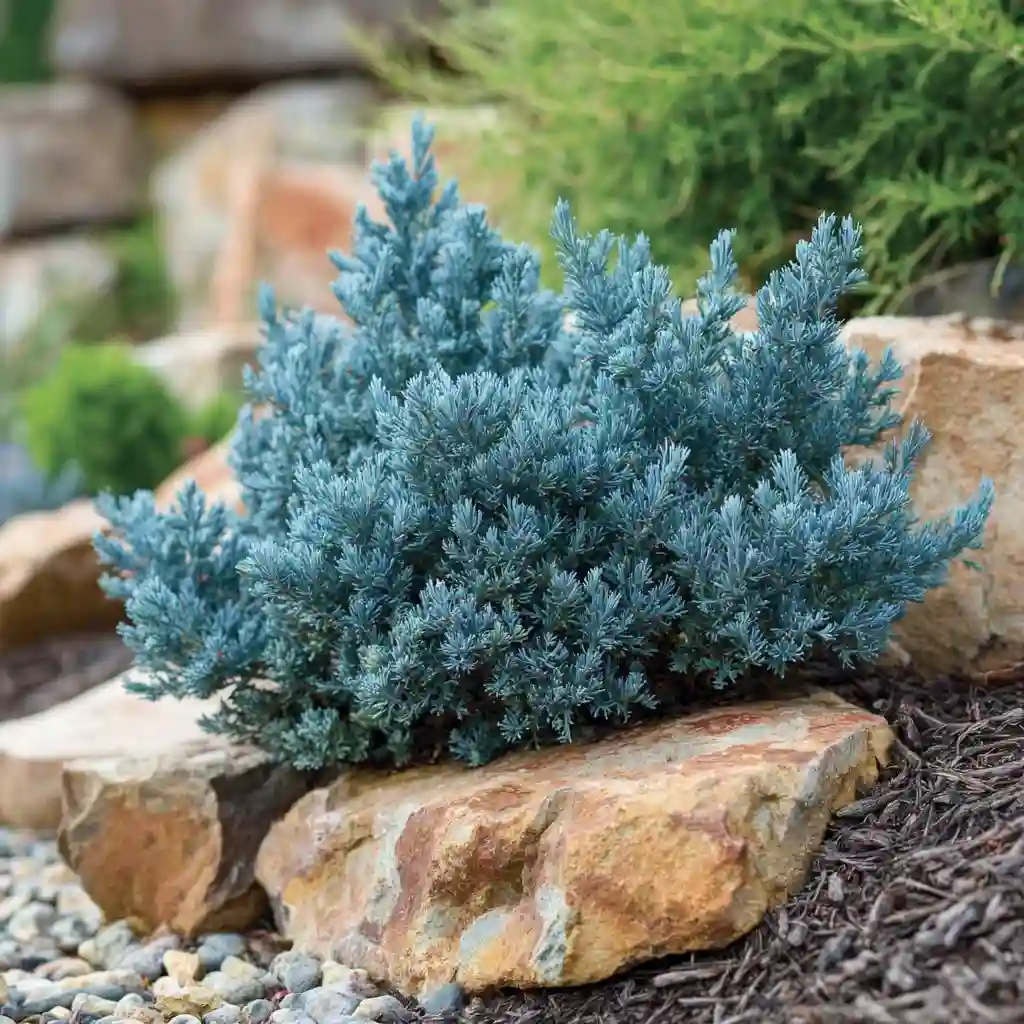
If you’re aiming for contrast and year-round color, Blue Star Juniper is one of the most striking low-growing shrubs you can add to your front yard. Its dense, steel-blue needles form a slow-spreading mound that glows in sunlight and pairs beautifully with green or burgundy foliage.
Not only is this shrub eye-catching, but it’s also tough as nails—resistant to drought, pests, and poor soil. It thrives in full sun and requires very little upkeep, making it ideal for sunny slopes, rock gardens, or borders where you want lasting color and texture with almost no fuss.
Why it works in front yards:
- Brilliant blue foliage for bold contrast
- Naturally compact and low-spreading
- Thrives in heat and drought conditions
Growth tip: Avoid overwatering—this juniper prefers dry, well-drained soil. Plant it in open areas where its unique color can truly shine.
Dwarf Mugo Pine (Pinus mugo ‘Mops’)

Dwarf Mugo Pine is a tough, compact conifer that earns its place among the best low-growing shrubs for front yard landscaping. With its dense, dark green needles and naturally rounded shape, this shrub brings structure and a rugged beauty to even the harshest environments.
It’s incredibly hardy—tolerating wind, poor soil, cold temperatures, and drought once established. Its slow growth makes it a perfect choice for homeowners who want year-round greenery without the maintenance of frequent pruning. Whether you’re working with rocky soil, sloped terrain, or open foundation beds, Dwarf Mugo Pine delivers timeless appeal.
Why it works in front yards:
- No-fuss evergreen with year-round color
- Handles tough conditions and minimal water
- Ideal for rock gardens and foundation planting
Growth tip: Plant in full sun with excellent drainage. Avoid overwatering, especially in clay soils where root rot can be an issue.
Winter Gem Boxwood (Buxus microphylla var. japonica ‘Winter Gem’)
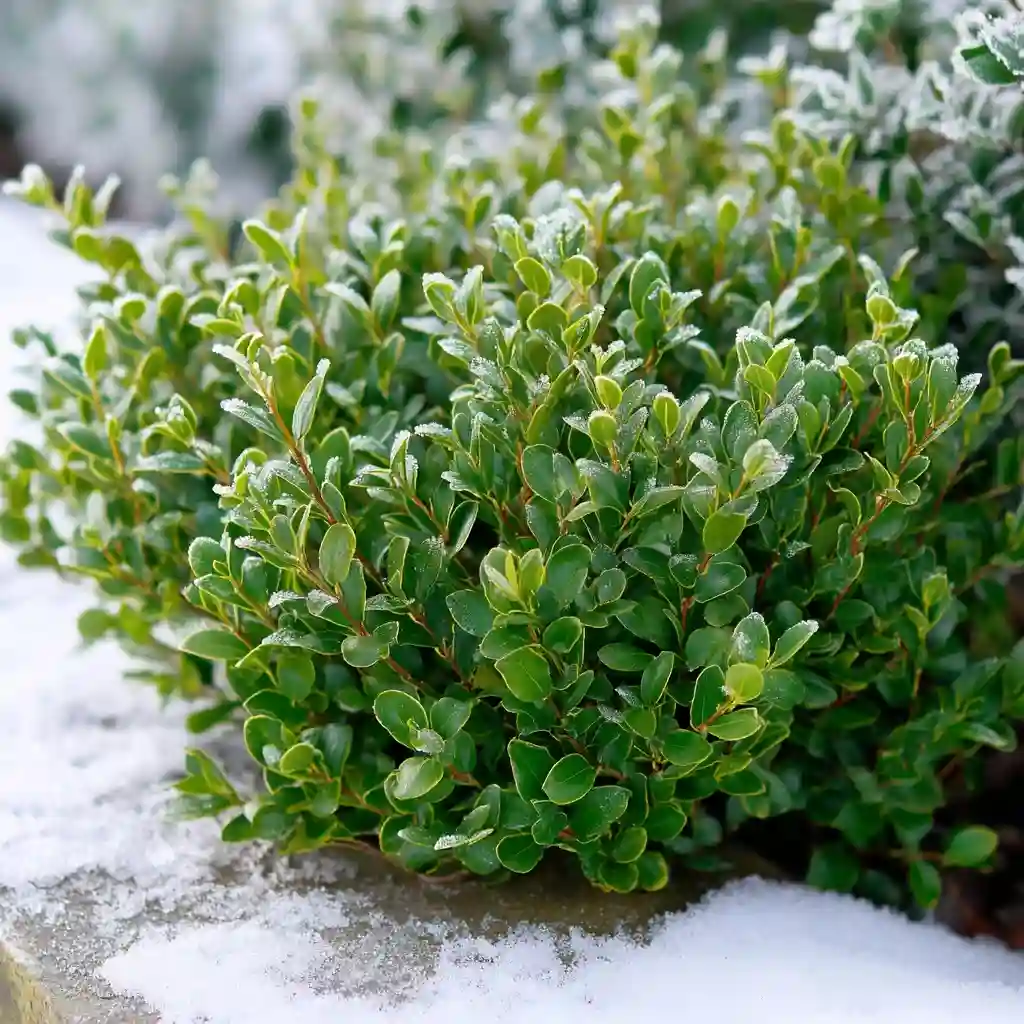
For cold-climate gardeners, Winter Gem is one of the most dependable low-growing shrubs you can choose. This compact boxwood variety keeps its vibrant green color even through frosty winters, unlike many evergreens that turn bronze or yellow. Its dense, small leaves and mounded shape make it a natural fit for front yard borders, walkways, and foundation plantings.
Winter Gem grows slowly and evenly, making it easy to maintain. Whether you want a neatly trimmed hedge or a soft, rounded form, this shrub is flexible and forgiving. It also adapts well to containers, making it a great option for framing a front entry or porch steps.
Why it works in front yards:
- Retains color through winter
- Easy to shape or leave natural
- Great for formal and casual designs
Growth tip: Plant in moist, well-draining soil and mulch in colder zones to protect roots. Prune lightly in spring to encourage bushier growth.
Dwarf Hydrangea (Hydrangea macrophylla ‘Little Lime’ or ‘Bobo’)
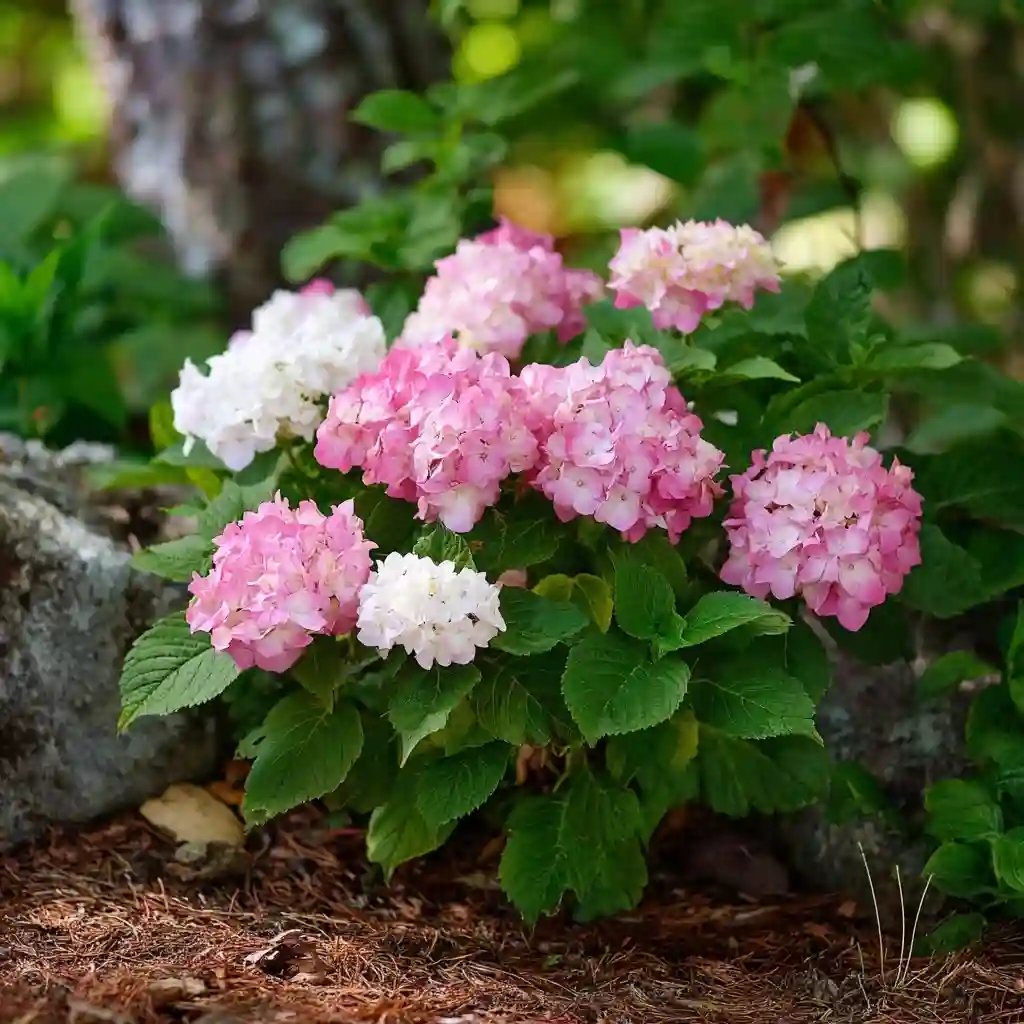
If you want lush, eye-catching blooms without overwhelming your front yard, Dwarf Hydrangeas are a top-tier choice among low-growing shrubs. Varieties like ‘Little Lime’ and ‘Bobo’ produce abundant, showy flower clusters on a compact frame, offering big visual impact in a small footprint.
These hydrangeas bloom from mid-summer into fall, with flower colors that can range from lime green to creamy white to soft pink—depending on the variety and soil pH. They’re especially useful for softening foundation lines, filling shady spots, or adding color beneath trees and taller shrubs.
Why it works in front yards:
- Lush flowers on a small-scale plant
- Long blooming season adds consistent beauty
- Perfect for shade-to-partial-sun areas
Growth tip: Water regularly during dry spells, especially during bloom time. Prune in late winter or early spring to encourage fresh, vigorous growth.
The Fairy Rose (Rosa ‘The Fairy’)

When it comes to charm and consistency, The Fairy Rose earns its place among the best low-growing shrubs for front yard landscaping. This compact, repeat-blooming rose produces clusters of small, soft pink flowers from late spring all the way through fall—bringing romantic color and fragrance to borders, beds, and walkways.
Unlike many traditional roses, The Fairy is known for being low-maintenance and disease-resistant. It forms a tidy mound of glossy green foliage, making it perfect for edging flower beds or planting along the base of a porch or front path.
Why it works in front yards:
- Blooms continuously with little care
- Compact and tidy habit
- Excellent disease resistance
Growth tip: Choose a sunny spot with well-drained soil. Deadhead occasionally to encourage more blooms, and prune lightly in early spring to maintain shape.
Dwarf Spirea (Spiraea japonica ‘Goldflame’ or ‘Little Princess’)
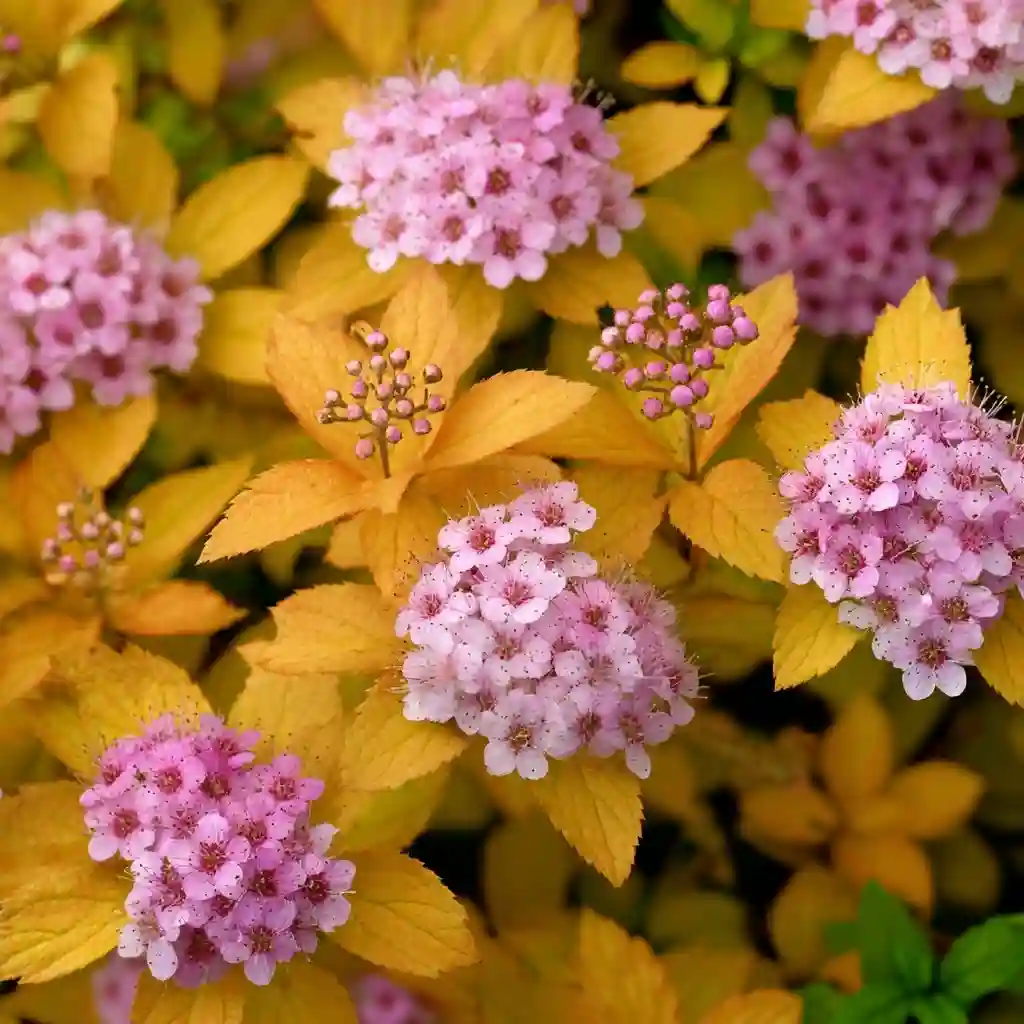
Colorful, compact, and easy to care for, Dwarf Spirea is one of the most versatile low-growing shrubs you can plant in the front of your house. Varieties like ‘Goldflame’ and ‘Little Princess’ offer mounded shapes with soft pink flower clusters in late spring to early summer—and that’s just the start.
What really sets spirea apart is its foliage. ‘Goldflame,’ for example, emerges with bronze-tinted leaves in spring, matures to green, and then turns gold and orange in fall—offering three seasons of vibrant color. These shrubs are drought-tolerant once established and are ideal for borders, under windows, or mixed with evergreens for contrast.
Why it works in front yards:
- Beautiful foliage that changes with the seasons
- Compact size fits tight spaces
- Attracts pollinators and resists pests
Growth tip: Cut back old stems in late winter to encourage fresh growth and better blooming. Spirea thrives in full sun but tolerates some light shade.
Potentilla (Potentilla fruticosa)
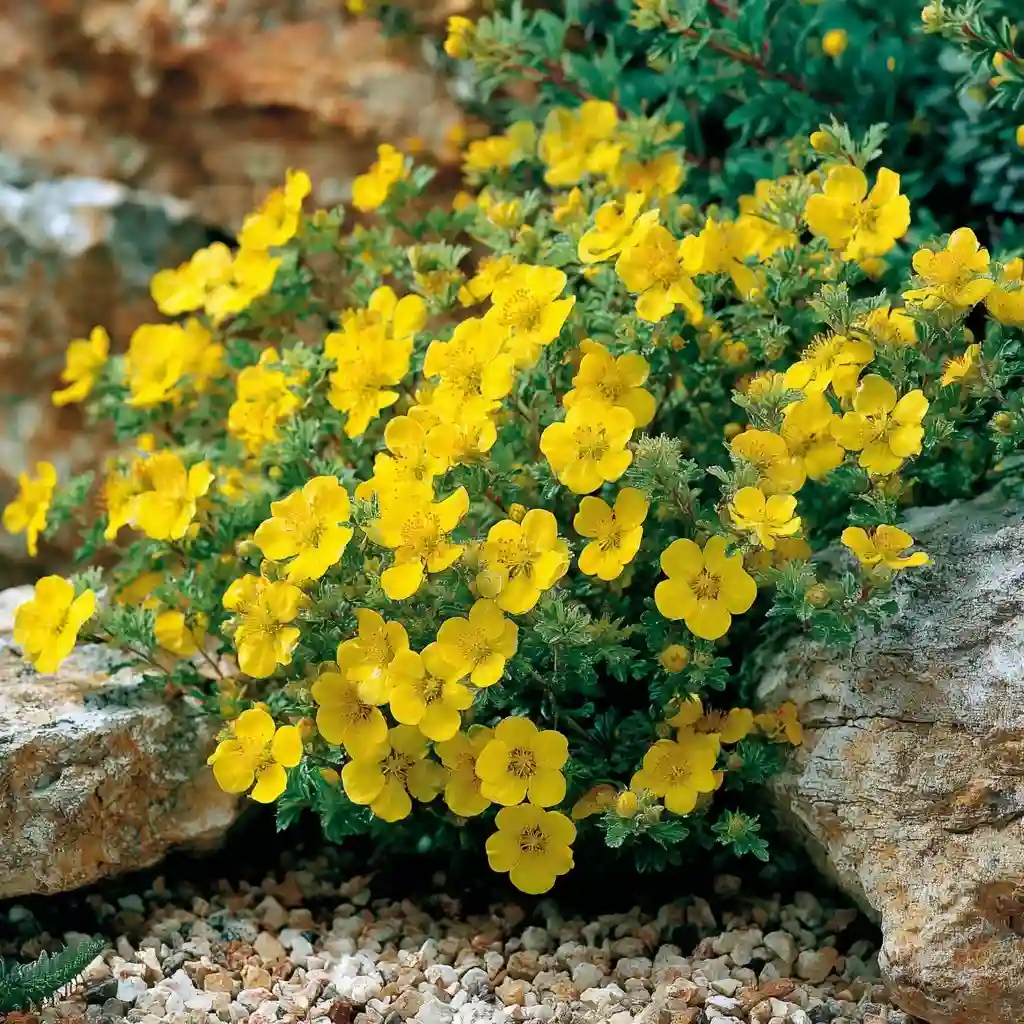
Bright, cheerful, and incredibly tough, Potentilla is a standout among low-growing shrubs for front yard spaces that need reliable, long-lasting color. With blooms that range from sunny yellow to white, pink, or even orange depending on the cultivar, Potentilla flowers from late spring through fall—often for several months straight.
This compact shrub thrives in full sun and is remarkably resilient. It handles drought, poor soil, and even urban pollution without complaint, making it a great choice for gardeners who want low-effort beauty. Its tidy, bushy form is ideal for edging beds, lining driveways, or adding continuous color beneath taller shrubs.
Why it works in front yards:
- Prolonged blooming season with minimal care
- Thrives in challenging conditions
- Stays compact and tidy without heavy pruning
Growth tip: Cut back lightly in early spring to refresh growth. Avoid overwatering—Potentilla prefers dry to average moisture levels.
Dwarf Azalea (Azalea ‘Hino Crimson’ or ‘Red Ruffles’)

If you’re looking to add vivid spring color to your front yard, Dwarf Azaleas are among the most striking low-growing shrubs you can plant. Varieties like ‘Hino Crimson’ and ‘Red Ruffles’ produce an explosion of bright red, pink, or even purple blooms that light up the landscape just as winter fades.
These compact azaleas thrive in partial shade and acidic soil, making them ideal for planting under trees or along the shaded side of your home. Their dark green, evergreen foliage keeps garden beds looking neat and structured even after the blooms fade.
Why it works in front yards:
- Showy spring blooms in vibrant colors
- Compact, mounded shape fits tight spots
- Evergreen foliage for year-round interest
Growth tip: Avoid alkaline soil and mulch regularly to retain moisture. Prune lightly after flowering to maintain shape without cutting off next year’s buds.
Dwarf Weigela (Weigela florida ‘Minuet’ or ‘Spilled Wine’)
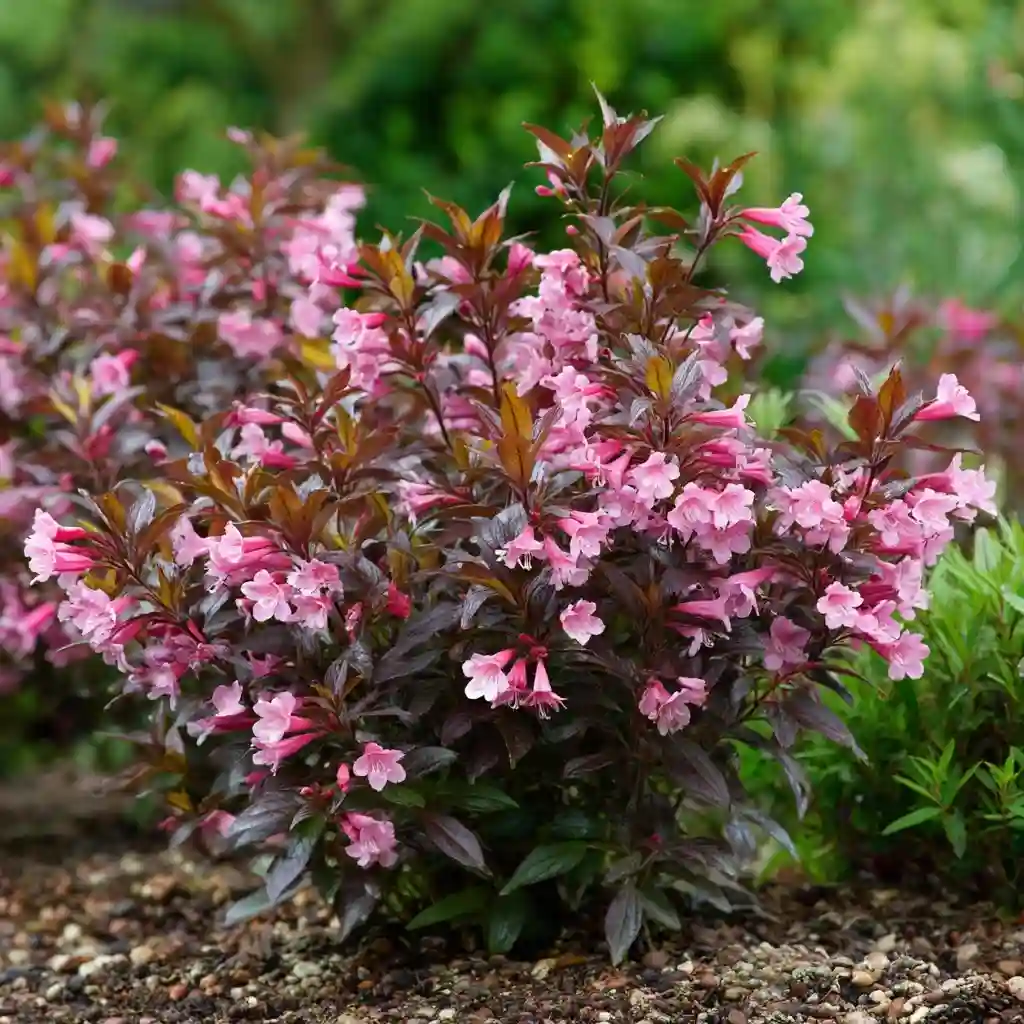
For a splash of color and pollinator appeal, Dwarf Weigela is a top pick among low-growing shrubs for the front of your house. With trumpet-shaped flowers in shades of pink or deep magenta, and compact growth habits, varieties like ‘Minuet’ and ‘Spilled Wine’ offer season-long interest without overwhelming the space.
These shrubs bloom in late spring and often rebloom in summer, especially when deadheaded. Their dark green or burgundy foliage adds depth even when not in bloom. Hummingbirds and bees are especially fond of the flowers, making this an excellent choice for nature-friendly landscaping.
Why it works in front yards:
- Eye-catching blooms and colorful foliage
- Compact size for borders and beds
- Attracts hummingbirds and pollinators
Growth tip: Plant in full sun for best flowering. Prune immediately after the first bloom to maintain shape and encourage a second flush of flowers.
Daphne (Daphne odora)
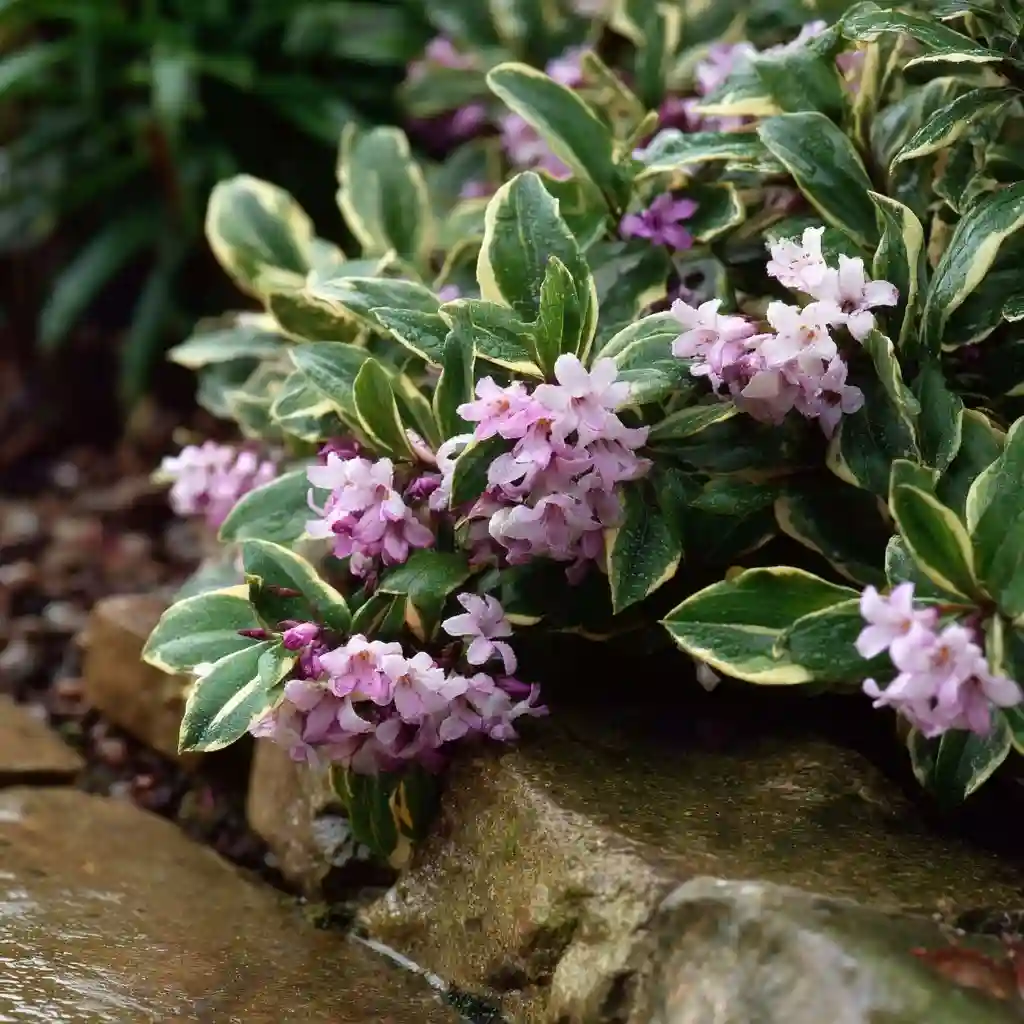
For gardeners who want fragrance and elegance in a compact form, Daphne is a refined choice among low-growing shrubs. While a bit more particular than some other varieties, its early-spring blooms—typically pale pink or white—fill the air with a rich, sweet scent that’s impossible to ignore.
Daphne’s glossy, evergreen leaves and tidy form make it a lovely addition near entryways, porches, or along walkways where its fragrance can be appreciated up close. While it prefers well-drained soil and can be sensitive to overwatering, its stunning bloom display makes the extra care worthwhile.
Why it works in front yards:
- Powerful fragrance from early-spring flowers
- Evergreen leaves offer year-round structure
- Compact shape fits narrow spaces or containers
Growth tip: Provide excellent drainage and avoid disturbing the roots. Plant where air circulation is good to reduce the risk of disease.
Heavenly Bamboo (Nandina domestica ‘Firepower’)
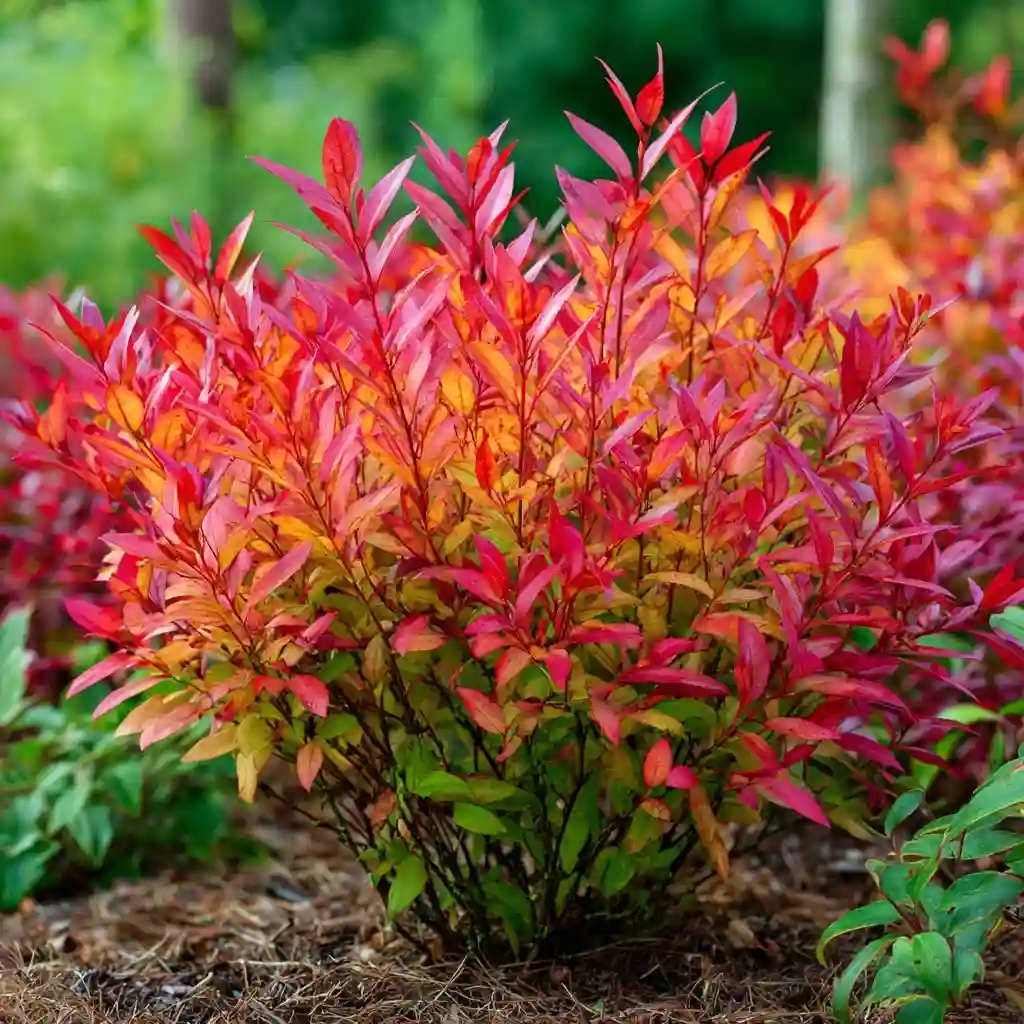
Despite its name, Heavenly Bamboo isn’t a true bamboo—but it earns its spot among the most dynamic low-growing shrubs for front yards thanks to its upright form and ever-changing foliage. ‘Firepower’ is a compact cultivar that grows in a neat clump and brings striking seasonal color shifts.
In spring, its leaves emerge lime green, gradually deepening to rich green in summer, and finally turning brilliant shades of red, bronze, and even burgundy in fall and winter. It’s evergreen in mild climates and requires very little maintenance, making it a favorite for borders, foundation beds, or as a standout in mixed plantings.
Why it works in front yards:
- Multi-season foliage color, even in winter
- Compact growth with upright structure
- Virtually maintenance-free once established
Growth tip: Prefers full sun for the best fall color but tolerates part shade. Avoid excessive fertilizing, which can reduce the intensity of foliage color.
author:🌿 Conclusion
Low-growing shrubs offer one of the easiest ways to boost curb appeal, frame your home with color and texture, and keep your front yard looking neat without constant upkeep. Whether you’re drawn to evergreen structure, showy blooms, or bold foliage, there’s a compact shrub to match your style and climate.
By mixing plant types—like flowering spirea, evergreen boxwoods, and colorful nandina—you’ll create a layered, year-round landscape that feels intentional and welcoming. Best of all, many of these shrubs are hardy, low-maintenance, and perfect for busy homeowners who want beautiful results with minimal effort.
Take time to plan your planting space, give each shrub room to grow, and choose varieties suited to your sun and soil conditions. With the right foundation, your front yard can become a vibrant, inviting extension of your home—season after season.
🌿 Love gardening inspiration? Follow me on Pinterest for bold plant ideas, tips, and seasonal color!
More Posts
